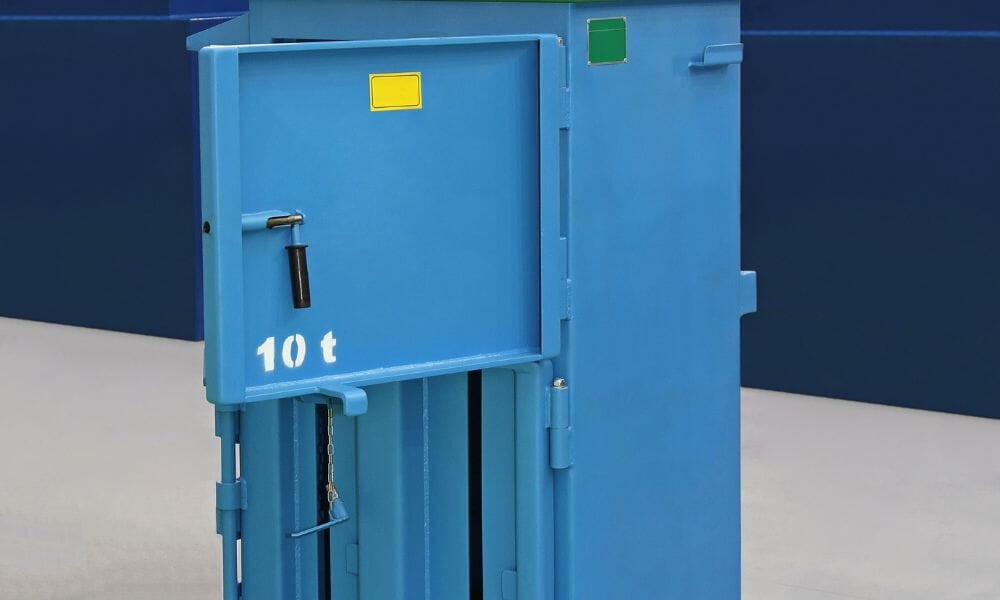
Vertical baling machines are indispensable tools in managing waste materials effectively, converting them into compact bales that are easier to transport and store. For businesses relying on these machines—whether in manufacturing, retail, or recycling—optimizing their efficiency can lead to significant cost savings, enhanced safety, and increased productivity. Here are four actionable tips for optimizing your vertical baling machine efficiency for peak performance.
Make Maintenance Routine
Your baling machine is a workhorse, and much like any high-performance system, it requires routine maintenance to operate efficiently. Implement weekly, monthly, and annual maintenance schedules to keep it running smoothly and prevent unexpected breakdowns.
Follow the baling manufacturer’s maintenance timeline. Vertical balers typically require a hydraulic oil change every two years. At that time, you will clean the hydraulic oil tank and refill the tank with the appropriate oil.
Keep a log of maintenance tasks to ensure nothing is overlooked. Common activities include inspecting and replacing damaged components, ensuring all nuts and bolts are properly tightened, and applying the correct lubricants to moving parts.
Provide Comprehensive Operator Training
Comprehensive training for vertical baling machine operators is key to optimizing efficiency. Operators should understand the machine’s controls, how to respond to various alarms, and how to use personal protective equipment (PPE) correctly.
Regular refresher courses reinforce safety and efficiency protocols. Training prepares operators to recognize the signs of potential malfunctions and to respond appropriately to minimize damage and downtime. For example, operators learn to recognize signs of wear or misalignment in the baling machine’s conveyor belts, and immediate maintenance can ensure automatic machines safely feed materials into the baling chamber.
Prepare Materials Correctly
Efficient baling begins before ever pressing a button. Proper material preparation saves time and ensures that bales meet the required specifications.
Make more uniform, denser bales using the following preparatory steps:
- Gather and sort the materials: Collect cardboard, plastic, newspaper scraps, or other manufacturer-approved materials for baling. Sort the materials based on type.
- Remove incompatible items: Once sorted, prepare the materials by removing any non-recyclable elements, such as staples or tape.
- Organize the materials: After preparation, organize the materials in a way that makes it easy to feed them into the baler. For example, stack flattened cardboard.
Follow Proper Loading and Operating Techniques
For safe and efficient baling, operators must load materials evenly and within the machine’s weight and size capacity. They should also know the required compression force for different materials and adjust the machine settings accordingly for optimal bale density.
Efficient operation also includes maintaining a bale production rhythm that does not overrun your storage or transportation capabilities. Whether you use an automatic or manual baler, optimize the bale-tying and ejection process to maintain a steady throughput.
With regular maintenance schedules, comprehensive operator training, meticulous material preparation, and correct loading and operating procedures, businesses can expect efficient vertical baling. These techniques also elevate safety and reduce waste management costs. Improve the waste management workflows at your business with a vertical baler from PackSmart.
